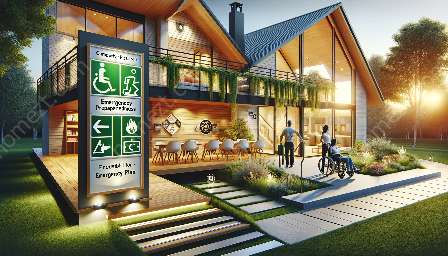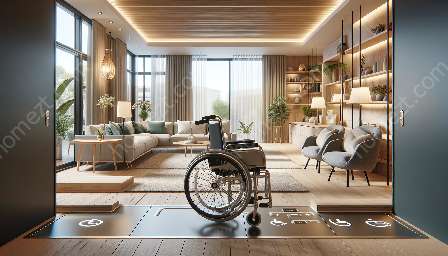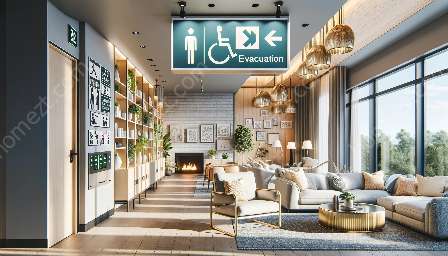Ensuring fire safety for disabled individuals is crucial for creating a secure living environment. This comprehensive guide explores effective strategies for implementing fire safety measures in homes designed for people with disabilities.
Understanding the Unique Challenges
When it comes to implementing fire safety measures, it's essential to consider the specific needs and challenges faced by disabled individuals. Mobility limitations, sensory impairments, and cognitive disabilities can all impact the ability to respond to a fire emergency.
Assessment and Planning
The first step in implementing fire safety measures for disabled individuals is to conduct a thorough assessment of the home environment. Identify potential hazards and barriers that could impede escape in the event of a fire. Develop a customized fire safety plan that takes into account the individual's specific needs and abilities.
Accessible Fire Alarms and Notifications
Equipping the home with accessible fire alarms and notifications is critical for ensuring that disabled individuals can quickly and effectively respond to fire emergencies. Consider installing alarms with visual and tactile alerts in addition to auditory signals. It's important to test these alarms regularly to ensure functionality.
Accessible Escape Routes
Create accessible escape routes that accommodate the mobility and sensory needs of disabled individuals. Install handrails, ramps, and widen doorways to facilitate easy movement in the event of an emergency. Clearly mark escape routes and ensure that they are free of obstructions.
Assistive Devices and Equipment
For individuals with specific mobility challenges, consider incorporating assistive devices and equipment that aid in fire evacuation. This may include stair lifts, evacuation chairs, and personal emergency evacuation plans (PEEPs). Keep these devices well-maintained and easily accessible.
Training and Communication
Regularly educate and train disabled individuals, as well as their caregivers and support network, on fire safety procedures and drills. Develop clear communication strategies to ensure that everyone understands their roles and responsibilities in the event of a fire. Encourage open dialogue about potential concerns or barriers.
Integration with Home Safety for People with Disabilities
Implementing fire safety measures for disabled individuals should be integrated with broader home safety considerations. This includes addressing accessibility, fall prevention, and emergency preparedness. By adopting a holistic approach to home safety, individuals with disabilities can experience a secure and supportive living environment.
Enhancing Home Safety & Security
Effective fire safety measures for disabled individuals contribute to overall home safety and security. By addressing the unique needs of disabled individuals, homes can be designed to be safer and more resilient in the face of fire hazards. Integration of fire safety into broader security measures enhances peace of mind for both individuals and their caregivers.
Conclusion
Implementing fire safety measures for disabled individuals is a vital step in creating a secure and supportive living environment. By addressing the unique challenges and needs of disabled individuals, homes can be equipped with effective fire safety strategies that promote safety and well-being for all occupants.





















